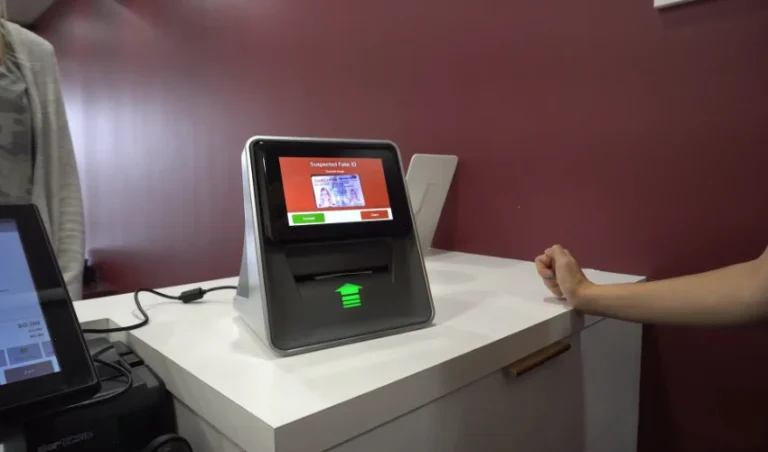In today’s digital age, the use of scannable IDs has become more prevalent across various industries—from age verification at bars to secure access at government buildings. But as technology evolves, so do counterfeiters. This raises an important question: What makes a scannable ID different from a fake one? In this article, we’ll dive deep into the characteristics, technology, and security features that separate authentic scannable IDs from their fake counterparts.
Understanding What a Scannable ID Is
A idsky is a form of identification—usually a driver’s license or a government-issued ID card—that includes encoded data readable by a scanner or barcode reader. These IDs are embedded with machine-readable technology, such as:
- Magnetic stripes
- 2D barcodes (PDF417)
- QR codes
- RFID chips
When scanned, the embedded data should match the information printed on the front of the ID, such as the name, date of birth, and address. Scannable IDs are used in various sectors including law enforcement, hospitality, and retail to verify identity and prevent fraud.
Key Features of a Genuine Scannable ID
Several security features distinguish a legitimate scannable ID from a fake. These include:
- Data Consistency
When a genuine ID is scanned, the information extracted should match the printed text on the card. If the barcode says one name and the card shows another, it’s a red flag.
- State-Specific Formatting
Each state or issuing body has a unique format and design for their IDs. This includes the placement of the photo, font style, and security elements like UV ink. Scannable IDs follow strict templates that fake ones often fail to replicate accurately.
- High-Quality Printing
Authentic IDs are printed using advanced printers that produce high-resolution images, crisp fonts, and precise color schemes. Fake IDs often have blurry photos, mismatched colors, or fuzzy text.
- Security Holograms and Overlays
Scannable IDs include holograms, microtext, ghost images, and laser-engraved text that are extremely difficult to forge. These features are usually visible only under specific lighting or magnification.
- Machine Readability
The barcode or magnetic strip on a real ID should be easily scannable by standard ID readers. Most fake IDs either don’t scan or provide mismatched or corrupt data when scanned.
How Fake IDs Try to Mimic Scannable Ones
Fake IDs are becoming increasingly sophisticated. Some vendors now advertise “scannable fake IDs,” which may fool basic scanners or untrained staff. These fake IDs may include barcodes or magnetic stripes that appear to work but often:
- Contain incorrect or randomized data
- Use outdated state templates
- Fail to include hidden security elements
- Are made from cheaper materials that feel different
Even when they scan successfully, fake IDs usually fail higher-level verification processes that involve software cross-checks or UV light inspection.
The Role of Scanners in Detecting Fakes
Advanced ID scanning systems do more than just read a barcode—they validate the data against known standards and flag inconsistencies. For example:
- Age verification software can calculate if the DOB matches the legal drinking age.
- Database checks can verify if an ID number is valid and issued by the correct state.
- Security pattern analysis ensures the ID design conforms to expected specifications.
Businesses that rely on scannable IDs for legal or safety reasons often use these technologies to reduce the risk of fraud.
Why Fake IDs Are Risky and Illegal
Possessing or using a fake ID is illegal in most jurisdictions. Beyond legal consequences, fake IDs can:
- Fail under scrutiny, leading to embarrassment or legal trouble
- Cause businesses to lose licenses, especially bars and clubs
- Compromise personal data, especially when purchased from shady online vendors
Scannable fake IDs may seem convincing at first glance, but they’re no match for advanced scanning and authentication systems.
How to Spot a Fake Scannable ID
Here are a few tips to help you identify a fake, even if it claims to be scannable:
- Scan the ID and check if the data matches the printed information.
- Feel the material—authentic IDs are made with durable plastic or polycarbonate, not flimsy laminates.
- Look under UV light—many real IDs have UV-sensitive patterns or images.
- Check for typos—many fakes contain spelling errors or incorrect formatting.
- Test with verification software if available.
Conclusion
The key difference between a genuine scannable ID and a fake lies in data integrity, security features, and machine readability. While counterfeiters continue to advance their tactics, legitimate scannable IDs are backed by layers of authentication that are extremely difficult to replicate. Whether you’re a business owner checking IDs at the door or someone interested in ID technology, understanding these differences is essential for staying safe and compliant.
